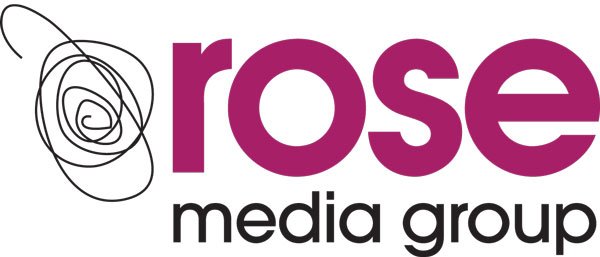In this blog, Kelly Yushchenko, Head of Digital at Rose Media Group, considers the importance of a social strategy and how you go about creating one.
Are you working without a social strategy? If so, you may find that you’re posting on social media for the sake of it. This is easily done when you don’t have an understanding of your goals, who your target audience is, and what they want; making it hard to achieve the results you want. So how do you go about creating a social strategy?
1/ Set achievable, measurable goals that make sense for your business
To begin, you must ask what the desired outcome of social activities is and how to they will support and complement additional business marketing activities?
Perhaps you want your social media to bring new business to your company, through building on your brand identity and increasing awareness or contribute towards profitability. The overall goal of your social activities will directly influence your strategy and approach and give you an idea of how much time and energy you’ll need to dedicate to your campaign.
If you have a supporting budget for your campaign, paid social media can be utilised. Paid social is essentially another word for advertising. You will pay for social channels to share your content with specific new targeted audiences who are likely to be interested in your product or service, either through “boosting” your organic content, or designing unique tailored advertisements.
2/ Take time to research your target audience
There are a number of ways to research your target audience which include:
- Using social media insights; the information provided via platforms analytics is vital and allows you to find the demographics of your audience in addition topics that interest them.
- Go straight to the horse’s mouth and ask your audience what you’d like to find out via direct messaging.
- Make use of analytical software including Google Analytics. The free service allows you to analyse in-depth detail about the visitors on your website. For a simple guide on how to set it up follow this link- https://analytics.google.com/analytics/academy/course/6
You will also have to determine what platforms your audience is using. It’s been found that the older generation tend to use Facebook and the younger generation Twitter and Instagram. You can adjust as you go. For instance, if a post works well on one platform but not the other, you can use the findings to adapt your posts to your correct audience.
3/ Establish your most important metrics and KPIs
Your social media strategy should be data-driven and work towards your objective, whether that’s driving website traffic or establishing an engaged audience who comment and share your content. Rather than focusing on vanity metrics, such as likes or retweets, dig into data that aligns directly with your goals. These include metrics like:
- Reach: Post reach is the number of unique users who saw your post.
- Clicks: This is the number of clicks on your content or account. Tracking clicks per campaign is essential to understand what drives curiosity or encourages people to buy or use your service.
- Engagement: The total number of social interactions divided by the number of impressions. This sheds light on how well your audience perceives you and their willingness to interact.
- Hashtag performance: What were your most-used hashtags? Which hashtags were most associated with your brand? Having these answers can help shape the focus of your content going forward.
- Social referrals: How many visitors to your website are coming from social? This can be tracked and measured through Google Analytics (a free tool) that allows you to evaluate how successful your social efforts are, per social channel, at meeting your goal.
4/ The fun part – Creating your content!
At this point, you should have established what to publish based on your goal and brand identity. You probably feel confident in which networks to cover, too. If you are feeling unsure, here is some inspiration from us:
- Use Stories and time-sensitive posts. The feature is available on LinkedIn and Twitter; however the most successful use of stories is on Instagram and Facebook.
- Change up your media from images, text, infographics and videos (to learn more about why video content is so important check out our blog ALERT: VIDEO CONTENT IS TAKING OVER!).
- Show your audience that you are human, whether you share an image or yourself or a personable message.
- Experiment with posts at various times of the day to explore which times your audience are most receptive to your messages.
5/ Assess your work
Evaluate what’s working and what isn’t to keep on improving your content! Using platform analytics along with free monitoring software, such as Sprout Social, Hootsuite and Google Analytics, allows you to delve into the details of each post and review what elements are meeting your objectives and identify areas that need switching up. Social media and the content required to attract and engage existing and prospect audiences is constantly evolving, making analytics one of the key tools to monitor social and campaign success.










